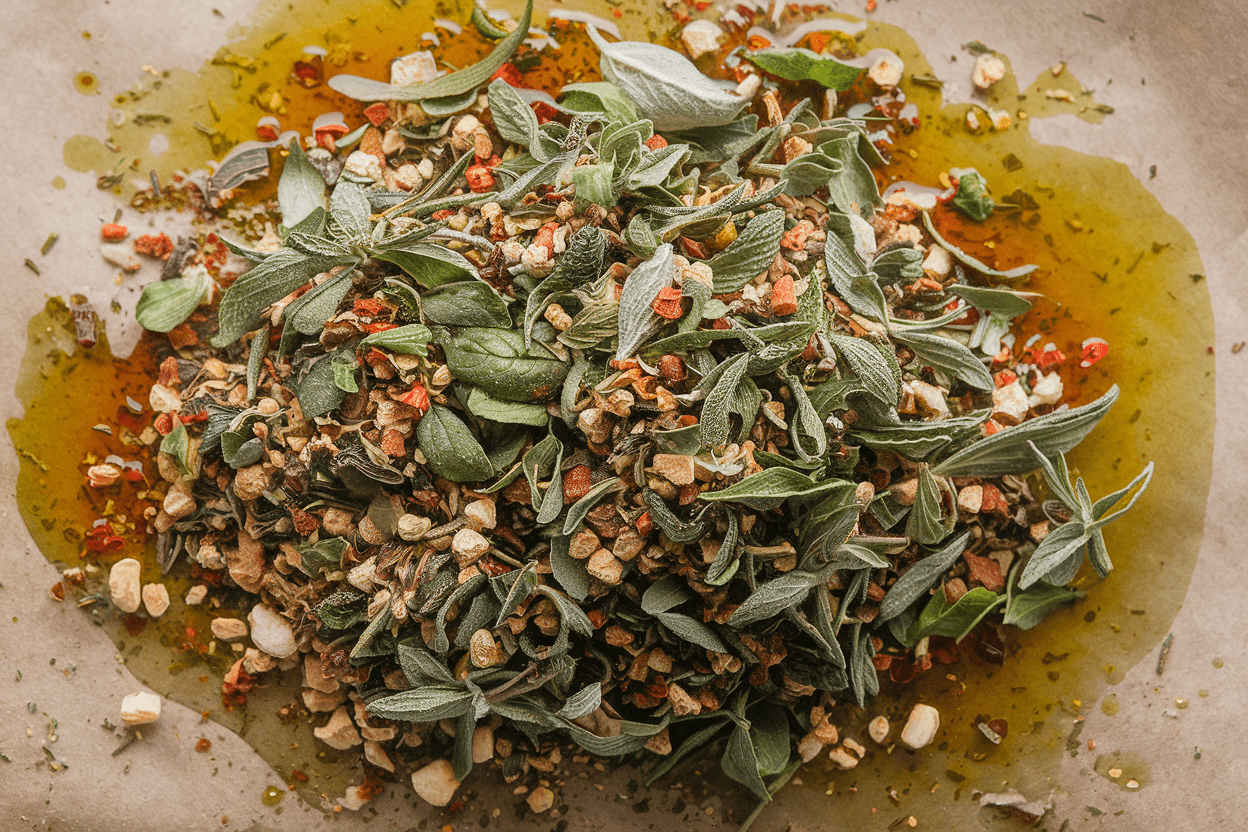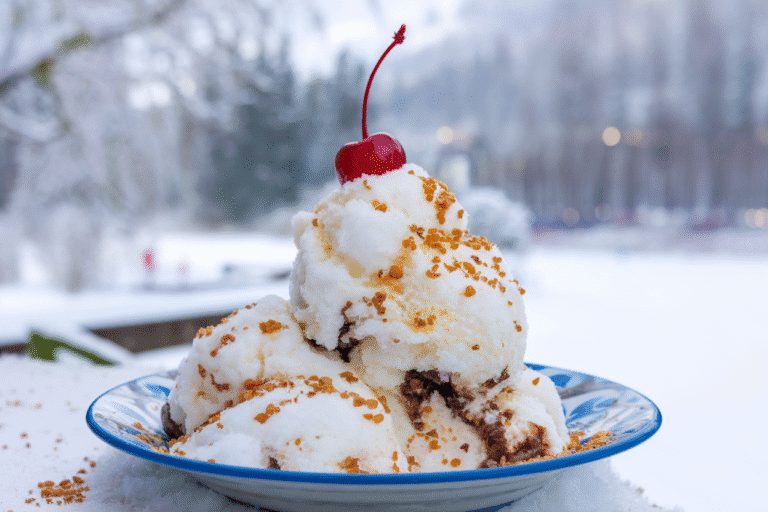This Italian Seasoning Mix Recipe Will Make Your Store-Bought Spices Obsolete (In 5 Minutes)
You don’t need another “secret family recipe.” You need a fast, punchy Italian seasoning mix that actually makes everything taste better, instantly. This blend turns bland chicken into a weeknight win, elevates pasta sauce like you hired a Nonna, and fixes the sad frozen pizza you pretend is “artisanal.” No mystery powders, no salt bombs—just bold herbs you control. Give me five minutes and a jar; I’ll give you your new kitchen flex.
What Makes This Recipe Awesome
- Balanced, not boring: A clean ratio of savory herbs with strategic heat and aroma—no one-note oregano overload.
- Customizable: Prefer more garlic?
Extra basil? Want it spicy? This mix plays nice with tweaks.
- Salt-free foundation: Season your food, not your spice jar.
You get control over sodium, FYI.
- Meal-multiplier: Works on roasted veggies, grilled meats, marinades, dressings, soups, and bread dips. It’s basically culinary duct tape.
- Budget-friendly and fresh: Build a better blend for less than premium store-bought mixes that sit on shelves for ages.
Ingredients Breakdown
- Dried oregano – 3 tablespoons: The core savoriness and classic Italian vibe.
- Dried basil – 3 tablespoons: Sweet, herbal, slightly minty—rounds out oregano’s edge.
- Dried thyme – 2 tablespoons: Woodsy, subtle floral notes that add depth.
- Dried rosemary – 1 tablespoon (finely crushed): Piney and robust; crush to avoid twiggy bits.
- Dried marjoram – 1 tablespoon: Softer, sweeter cousin to oregano—adds elegance.
- Dried parsley – 1 tablespoon: Gentle freshness that keeps the blend from tasting dusty.
- Garlic powder – 2 teaspoons: Savory backbone without the moisture of fresh garlic.
- Onion powder – 1 teaspoon: Subtle sweetness; helps everything taste “cooked.”
- Crushed red pepper flakes – 1/2 to 1 teaspoon (optional): A little heat goes a long way; adjust to taste.
- Fennel seed – 1/2 teaspoon (lightly crushed, optional): Classic sausage-y note; very Italian-American.
- Black pepper – 1/2 teaspoon, freshly ground: Brightens the entire profile.
- Lemon zest powder or citric acid – 1/4 teaspoon (optional): Adds a whisper of zing for sauces and dressings.
The Method – Instructions
- Check freshness: Rub a pinch of each dried herb between your fingers. If the aroma is weak, replace it.
Stale in, stale out.
- Measure precisely: Add all ingredients to a mixing bowl. If using rosemary or fennel, crush gently with a mortar or the back of a spoon.
- Whisk to combine: Stir until the mix looks uniform. No rogue clumps of garlic powder hiding in the corners.
- Test and tweak: Smell the blend.
Want more sweetness? Add basil. More savory depth?
A touch more thyme. Heat? More red pepper.
- Jar it up: Transfer to an airtight glass jar with a tight lid.
Label with the date and the blend name like the organized legend you are.
- Use guidelines: Start with 1 teaspoon per pound of meat or per 2 cups of sauce. Taste and adjust—your kitchen, your rules.
Storage Instructions
- Container: Store in a small, airtight glass jar to minimize air exposure. Plastic can hold odors from past lives—no thanks.
- Environment: Keep it cool, dark, and dry.
Not above the stove unless you enjoy heat and steam ruining herbs.
- Shelf life: Peak flavor for 4–6 months. After that, it’s safe but less potent. Make small batches you’ll actually use.
- Refresh trick: If it fades, perk it up with a pinch of fresh basil or oregano and a crack of black pepper.
What’s Great About This
- Universal upgrade: Sprinkle onto roasted potatoes, grilled zucchini, or tomatoes.
Watch “meh” turn into “more please.”
- Sauce savior: Hack jarred marinara—add 1–2 teaspoons while simmering. People will ask for your recipe. Smile mysteriously.
- Protein-friendly: Chicken, steak, pork, shrimp—rub with olive oil and seasoning, then cook.
Dinner solved.
- Bread magic: Mix with olive oil and a pinch of salt for a knockout dip. Add balsamic if you’re feeling bougie.
- Salad and soup booster: Whisk into vinaigrettes or finish soups with a pinch for instant complexity.
Common Mistakes to Avoid
- Using stale herbs: If your oregano smells like cardboard, it will taste like cardboard. Replace it.
- Skipping the crush: Whole rosemary/fennel needs a light crush.
Otherwise you’re chewing sticks. Not a vibe.
- Adding salt to the blend: Keep it salt-free so you can control seasoning per dish. Different foods, different needs.
- Heavy-handed heat: Red pepper flakes are potent in dry blends.
Start low; you can always add more later.
- Overcooking the herbs: Dried herbs can burn. For high-heat cooking, season partway through or toss post-cook with olive oil.
Different Ways to Make This
- Rustic Tuscan: Increase rosemary to 2 teaspoons, add 1 teaspoon sage, skip fennel. Great for roasts and potatoes.
- Pizza Night Blend: Add 1 teaspoon fennel seed, 1 teaspoon dried oregano extra, and a pinch of sugar.
Unreal on pizza and red sauce.
- Herby-Garlic Power: Double garlic powder, add 1 teaspoon dried chives. Perfect for garlic bread and dressings.
- Zesty Mediterranean: Add 1 teaspoon lemon zest powder and 1 teaspoon sumac (non-traditional but insanely good on fish and salads).
- Spicy Calabrian-Style: 1 teaspoon red pepper flakes, 1/2 teaspoon smoked paprika. For grilled chicken or shrimp skewers—chef’s kiss.
- Low-FODMAP Version: Omit garlic and onion powders; sub 1 teaspoon asafoetida powder (hing) if tolerated, or leave plain and add zest.
FAQ
Can I use fresh herbs instead of dried?
Fresh herbs don’t work well in this dry pantry blend.
If you want a fresh version for immediate use, triple the quantities by weight, chop finely, and stir into olive oil for a same-day marinade or dressing.
Is this the same as Italian seasoning from the store?
Sort of, but better. Store blends vary wildly and often pack fillers. This recipe gives you a clean, customizable base with reliable balance and no mystery ingredients.
How much should I use per dish?
Start with 1 teaspoon per pound of protein or per 2 cups of sauce/soup.
Taste, then adjust up by 1/2 teaspoon as needed. It’s easier to add than to fix over-seasoning, IMO.
Can I grind this into a fine powder?
Yes. Pulse in a spice grinder for 5–10 seconds for a finer texture that integrates faster into sauces and dressings.
Don’t overgrind or it can taste muddy.
What if I’m missing marjoram?
Sub with additional oregano plus a pinch of basil to keep it soft and fragrant. It won’t be identical, but it’ll still slap.
Does it work with white sauces or dairy?
Absolutely. It’s excellent in Alfredo, ricotta mixtures (lasagna, stuffed shells), and creamy soups.
Add gradually and bloom it in butter or warm cream for best flavor.
Is this gluten-free and vegan?
Yes. It’s just herbs and spices. As always, check labels if you’re buying pre-ground garlic or onion powders to avoid caking agents you don’t want.
Can I scale this up for gifts?
Totally.
Multiply the recipe, portion into small jars, and include a label with “Use 1 tsp per pound of protein or 2 cups of sauce.” People will ask for refills, fair warning.
In Conclusion
This Italian seasoning mix recipe is your five-minute shortcut to “wow” without buying another overpriced jar. It’s balanced, flexible, and built to make everything you cook taste more intentional. Keep it salt-free, store it smart, and tweak it to your palate.
Next time dinner tastes flat, a teaspoon of this is the fastest fix you’ve got—no Nonna required.






